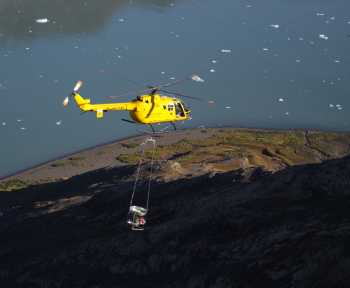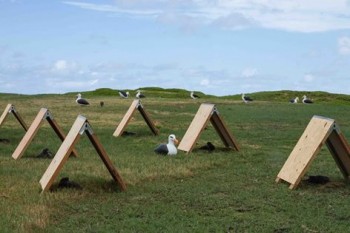Tony Martin (Centre for Remote Environments, University of Dundee, UK) and Mike Richardson have published open access in the conservation journal Oryx on the eradication attempt made to remove introduced rodents on the island of South Georgia/Islas Georgias del Sur*.
The paper’s abstract follows:
“The Subantarctic island of South Georgia lost most of its birds to predation by rodents introduced by people over 2 centuries. In 2011 a UK charity began to clear brown rats Rattus norvegicus and house mice Mus musculus from the 170 km long, 3,500 km island using helicopters to spread bait containing Brodifacoum as the active ingredient. South Georgia’s larger glaciers were barriers to rodent movement, resulting in numerous independent sub-island populations. The eradication could therefore be spread over multiple seasons, giving time to evaluate results before recommencing, and also reducing the impact of non-target mortality across the island as a whole. Eradication success was achieved in the 170 km Phase 1 trial operation. Work in 2013 (Phase 2) and early 2015 (Phase 3) covered the remaining 128 km occupied by rodents. By July 2017, 28 months after baiting was concluded, there was no sign of surviving rodents, other than one apparently newly introduced by ship in October 2014. A survey using detection dogs and passive devices will search the Phase 2 and Phase 3 land for rodents in early 2018. Seven (of 30) species of breeding birds suffered losses from poisoning, but all populations appear to have recovered within 5 years. The endemic South Georgia pipit Anthus antarcticus was the first bird to breed in newly rat-free areas, but there were also signs that cavity-nesting seabirds were exploring scree habitat denied them for generations. Enhanced biosecurity measures on South Georgia are needed urgently to prevent rodents being reintroduced.

A helicopter flies over the island of South Georgia/Islas Georgias del Sur* spreading poison bait
Reference:
Martin, A.R. & Richardson, M.G. 2017. Rodent eradication scaled up: clearing rats and mice from South Georgia. Oryx doi.org/10.1017/S003060531700028.
John Cooper, ACAP Information Officer, 25 September 2017
*A dispute exists between the Governments of Argentina and the United Kingdom of Great Britain and Northern Ireland concerning sovereignty over the Falkland Islands (Islas Malvinas), South Georgia and the South Sandwich Islands (Islas Georgias del Sur y Islas Sandwich del Sur) and the surrounding maritime areas.

 English
English  Français
Français  Español
Español 


